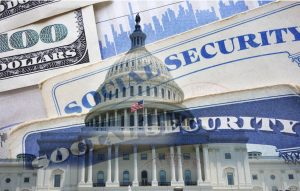Hello! This is MarketWatch reporter Isabel Wang bringing you this week’s ETF Wrap. In this week’s edition, we look at flows into U.S. exchange-traded funds in July which recorded their second-best month of 2023 as stock market’s rally gained steam and widened beyond the first-half winners.
Please send tips, or feedback, to [email protected] or to [email protected]. You can also follow me on Twitter at @Isabelxwang and find Christine at @CIdzelis.
Sign up here for our weekly ETF Wrap.
U.S. exchange-traded funds had their second strongest month of inflows for the year in July as a once-concentrated stock-market rally continued to even out, while investors climbed down the market-cap ladder as mid- and small-cap funds started to lead the charge.
U.S.-listed ETFs notched another month of solid inflows, collecting a net $60.7 billion in July, after hauling in a net $70.2 billion in the previous month, according to FactSet data compiled by MarketWatch, which includes flows into funds in six major asset classes — equity, fixed income, commodities, asset allocations, alternatives and currency.
July’s inflows were mainly powered by U.S. broad- and sector-equity funds, which helped stock ETFs attract around $44.9 billion of total net capital in July, according to FactSet data.
Sector-equity ETFs started the year’s second act on the right foot after a brutal first half with nearly $19 billion of outflows as megacap technology stocks dominated the scene from January through May, according to data from Morningstar Research Services.
However, sector-equity funds brought in $7.9 billion of capital in July, their best month of flows since October 2022, said Ryan Jackson, manager research analyst at Morningstar Research Services, in a Tuesday note. Financials-sector ETFs led the pack with $2.6 billion of net new money, while industrials and energy sectors attracted around $1.6 billion and $1.3 billion last month, respectively, according to Morningstar data.
See: ‘Rare’ rally in cyclical stocks largely over, Goldman warns, after ETF investors favored such areas of the market
“Over the past two months we’ve seen a lot of small-cap strategies outperform their larger-cap, and mid-caps kind of getting on the act. So it’s not just these handful of ‘Magnificent Seven’ stocks that are really leading the charge. It’s become a much more democratic rally over the past couple of months,” Jackson told MarketWatch in a follow-up interview on Wednesday.
iShares Core S&P Small-Cap ETF
IJR
gained 5.5% in July, compared to a 3.2% advance for the iShares Core S&P 500 ETF
IVV
during the same period. “Strong economic growth likely benefited IJR more acutely than IVV, as small-cap stocks tend to be more sensitive than their more-established brethren,” Jackson said.
See: The ‘narrow breadth’ chorus has fallen silent. What broadening participation in stock-market rally means for investors.
He also pointed out “some divergence among the category’s heaviest hitters,” referring to the spread in flows between two large-cap funds tracking the benchmark S&P 500 index, the IVV and the SPDR S&P 500 ETF Trust
SPY.
The SPY is the very first exchange-traded fund listed in the United States and the largest fund with over $430 billion under management.
The FactSet data shows that while the IVV led all the U.S.-listed funds by collecting over $11 billion in July, the SPY saw nearly $4 billion of outflows over the same period. The SPY was up 3.3% in July.
However, Jackson said the flows of SPY are “notoriously erratic” and sometimes a “go-to shorthand” for traders that just want to have a quick equity exposure. “It’s not necessarily a fund that is so much favored by the long-term investment crowd planning on buying and holding… I haven’t noticed a really clear pattern with what that necessarily says about the market or about investors’ attitude towards the market.”
It’s also worth noting that fixed-income ETFs, which ruled the first half with an over $101 billion of inflows, still recorded its third-largest monthly inflows of $17.4 billion in July on the heels of their $27.8 billion breakout in March and $23.9 billion of inflows in January, according to FactSet data.
Jackson and his team saw in July that while ETF investors started to feel more comfortable taking risks and struggled to warm up to some of the riskier asset classes, they are not ready to “completely abandon” fixed-income strategies that they favored when things were uncertain.
“What we’re seeing now is a regime of people who are a little bit more comfortable with risk, but there are valid alternatives to actually generate sound return,” Jackson said via phone. “Certainly government strategies have continued to be the story — you’re buying something that’s nearly risk free at a more competitive rate than you’ve been able to for a long time.”
As usual, here’s your look at the top- and bottom-performing ETFs over the past week through Wednesday, according to FactSet data.
The good…
| Top Performers | %Performance |
|
Sprott Uranium Miners ETF URNM |
3.3 |
|
Invesco DWA SmallCap Momentum ETF DWAS |
2.4 |
|
Global X Uranium ETF URA |
2.2 |
|
Invesco China Technology ETF CQQQ |
2.0 |
|
VanEck Oil Services ETF OIH |
2.0 |
| Source: FactSet data through Wednesday, August 2. Start date July 27. Excludes ETNs and leveraged products. Includes NYSE, Nasdaq and Cboe traded ETFs of $500 million or greater. | |
…and the bad
| Bottom Performers | %Peformance |
|
Invesco Solar ETF TAN |
-7.0 |
|
KraneShares Global Carbon Strategy ETF KRBN |
-6.2 |
|
iShares Global Clean Energy ETF ICLN |
-5.1 |
|
United States Natural Gas Fund L.P. UNG |
-4.7 |
|
Global X Robotics & Artificial Intelligence ETF BOTZ |
-4.3 |
| Source: FactSet data | |
New ETFs
-
J.P. Morgan Asset Management Monday announced the firm has completed the conversion of four mutual funds to ETFs, JPMorgan Equity Focus ETF
JPEF,
JPMorgan Limited Duration Bond ETF
JPLD,
JPMorgan High Yield Municipal ETF
JMHI
and JPMorgan Sustainable Municipal Income ETF
JMSI.
The funds could provide investors with active investment options in markets traditionally available to ETF investors through mostly passive solutions, said the company in a statement on Monday.
Weekly ETF reads
Read the full article here









